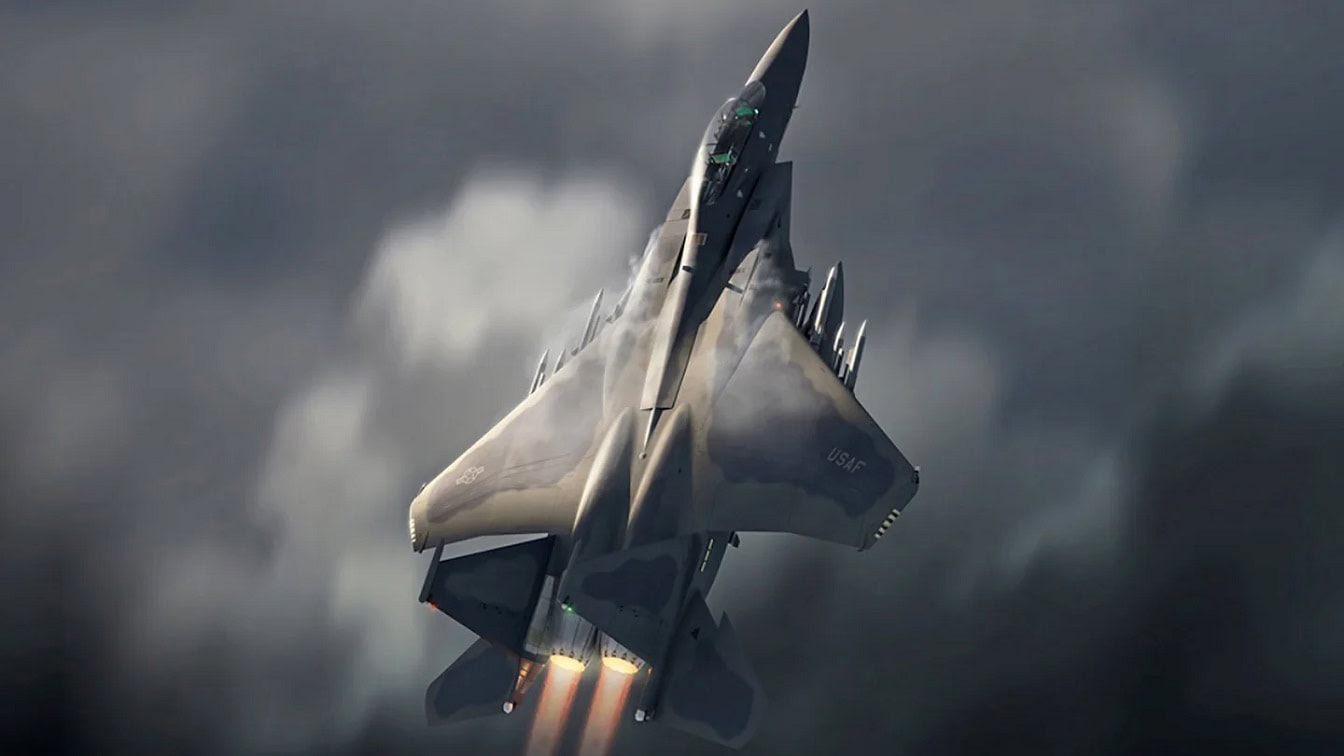That one enemy: Not having stealth on the F-15EX. But does it matter? As the United States navigates an increasingly multipolar world, the need for a robust and adaptable airpower strategy has never been greater. The F-15EX Eagle II, the latest iteration of the venerable F-15 platform, is a critical piece of this strategy—yet it remains underappreciated in public discourse. Critics argue that the airframe is outdated, a relic of the Cold War, and that resources should instead flow toward next-generation stealth platforms like the F-35 and the yet-to-be-fielded Next Generation Air Dominance (NGAD) program.
These criticisms miss the mark. The F-15EX is not a competitor to America’s stealth aircraft; it is a complementary force multiplier that provides cost-effective, high-performance airpower in an era of constrained budgets and diverse operational demands, particularly in the context of great power competition.
The F-15EX builds on the proven airframe of the F-15, which has never been lost in air-to-air combat. However, this is not a warmed-over version of a 1970s aircraft. The Eagle II incorporates advanced avionics, an updated electronic warfare suite, increased weapons capacity, and an open mission system architecture that allows for rapid upgrades.
With these improvements, the F-15EX can operate effectively in contested airspace, providing crucial firepower and flexibility. One of its key advantages is its payload capacity. Unlike the F-35, which is constrained by internal weapons bays to maintain stealth, the F-15EX can carry a staggering number of weapons—including hypersonic missiles that would be too large for fifth-generation stealth fighters.
This makes it a critical enabler of America’s evolving air dominance strategy, particularly in long-range strike missions and in roles that do not require extreme stealth capabilities.
A Fighter with a Real Mission
With the return of great power competition, the United States faces challenges from both China and Russia in the Indo-Pacific and European theaters. In these environments, the F-15EX provides distinct advantages. In the Indo-Pacific, where distances are vast and air bases are vulnerable, the Eagle II’s range and payload offer a valuable complement to stealth platforms like the F-35 and B-21 bomber.
The ability to carry large numbers of air-to-air missiles or long-range stand-off weapons allows it to function as a “missile truck,” supporting stealth fighters operating closer to enemy defenses.
This concept has already been tested with platforms like the F-22 and F-35 acting as stealthy sensors that direct weapons launched from non-stealth aircraft at standoff distances. The F-15EX, with its greater endurance and weapons load, is ideally suited to this role. In the European theater, where NATO faces a revanchist Russia, the F-15EX provides an immediate and credible boost to air superiority and interdiction capabilities.
With European air forces struggling to meet their own operational needs, the rapid deployment of the F-15EX could serve as a critical force multiplier in deterring Russian aggression. Moreover, its advanced electronic warfare capabilities provide a much-needed counter to Russian air defense systems. This is particularly relevant given the ongoing struggles of Russia’s Su-57 Felon program, which has failed to achieve meaningful serial production or demonstrate true fifth-generation capabilities.
One of the most compelling arguments for the F-15EX is its cost-effectiveness. While the F-35 has undeniable advantages in stealth and sensor fusion, it remains an expensive platform to procure and maintain.
The F-15EX, on the other hand, benefits from an existing logistics and maintenance ecosystem, making it significantly cheaper to operate over its lifespan. The Air Force estimates that integrating the F-15EX into its force structure will be far less costly than developing an entirely new fourth-plus generation fighter, while still offering significant capability enhancements. Moreover, because the Eagle II is based on a mature airframe, its development risks are minimal compared to emerging programs like NGAD.
In an era where defense budgets face increasing scrutiny and competing priorities, investing in a proven and highly capable platform is a pragmatic choice.
The F-15EX allows the U.S. Air Force to field a capable fighter force without betting everything on unproven technologies that may face delays or cost overruns. This approach aligns well with a grand strategy of restraint, which prioritizes maintaining credible deterrence and avoiding unnecessary military entanglements.
The F-15EX Has No Stealth: No Problem?
Despite its advantages, the F-15EX has faced criticism from some quarters. Detractors argue that a non-stealthy aircraft is ill-suited for modern conflicts, particularly against peer adversaries with advanced air defenses. This criticism overlooks the reality that not every mission requires stealth.
Stealth aircraft like the F-35 are invaluable in penetrating high-threat environments, but once air superiority is achieved, platforms like the F-15EX can take over many of the heavy-lifting roles, allowing more expensive and maintenance-intensive stealth assets to be used selectively. Additionally, the argument that the F-15EX is simply a rehash of an old design ignores the profound technological advancements incorporated into the airframe.
A Technological Powerhouse Fighter from Boeing
With state-of-the-art radar, electronic warfare capabilities, and networked sensor fusion, the F-15EX is more than capable of holding its own in modern combat. Furthermore, its open mission systems allow for continuous upgrades, ensuring that it remains relevant even as new threats emerge.
The U.S. Air Force’s fighter fleet must be built around a mix of capabilities, balancing cost, mission requirements, and operational realities. The F-15EX fits perfectly into this equation. It provides the capacity and capability to handle high-intensity conflicts while preserving stealth platforms for missions where they are most needed.
Critically, the F-15EX ensures that the United States does not put all its eggs in the stealth basket. While next-generation aircraft will play an essential role in future warfare, the ability to field a large number of high-performance fighters at reasonable costs is just as crucial.
The Eagle II guarantees that the U.S. will not face a capacity shortfall in a future conflict. Furthermore, by maintaining a mix of legacy and advanced platforms, the U.S. avoids unnecessary overextension while ensuring it has the right tools for the right missions—a key tenet of a restraint-based grand strategy.
The F-15EX Eagle II: The Air Force Must Say Yes
The F-15EX Eagle II is not a relic of the past—it is a crucial asset for the future. As the U.S. navigates a complex security environment defined by multipolarity, strategic competition, and tightening defense budgets, investing in this platform is a wise choice.
With its unmatched payload, advanced avionics, cost-effectiveness, and immediate availability, the F-15EX stands as one of the most pragmatic and necessary acquisitions for the U.S. Air Force.
Rather than being dismissed as an outdated platform, the F-15EX should be recognized for what it is: a force multiplier that ensures American airpower remains dominant in an era of great power competition while aligning with a prudent and restrained approach to military engagement.
F-15EX Photo Essay
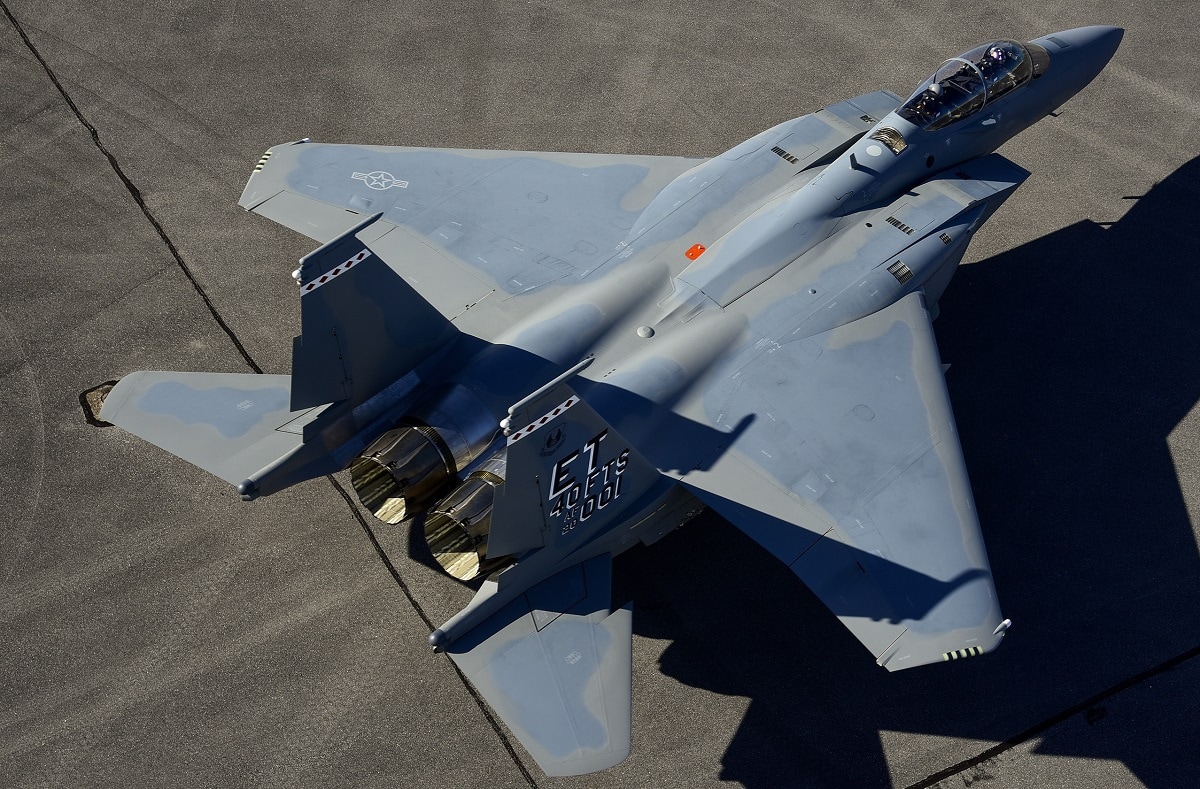
The F-15EX Eagle II, the Air Force’s newest fighter aircraft, arrives to Eglin Air Force Base, Florida March 11. The aircraft will be the first Air Force aircraft to be tested and fielded from beginning to end through combined developmental and operational tests. The 40th Flight Test Squadron and the 85th Test and Evaluation Squadron personnel are responsible for testing the aircraft. (U.S. Air Force photo/1st Lt. Karissa Rodriguez)
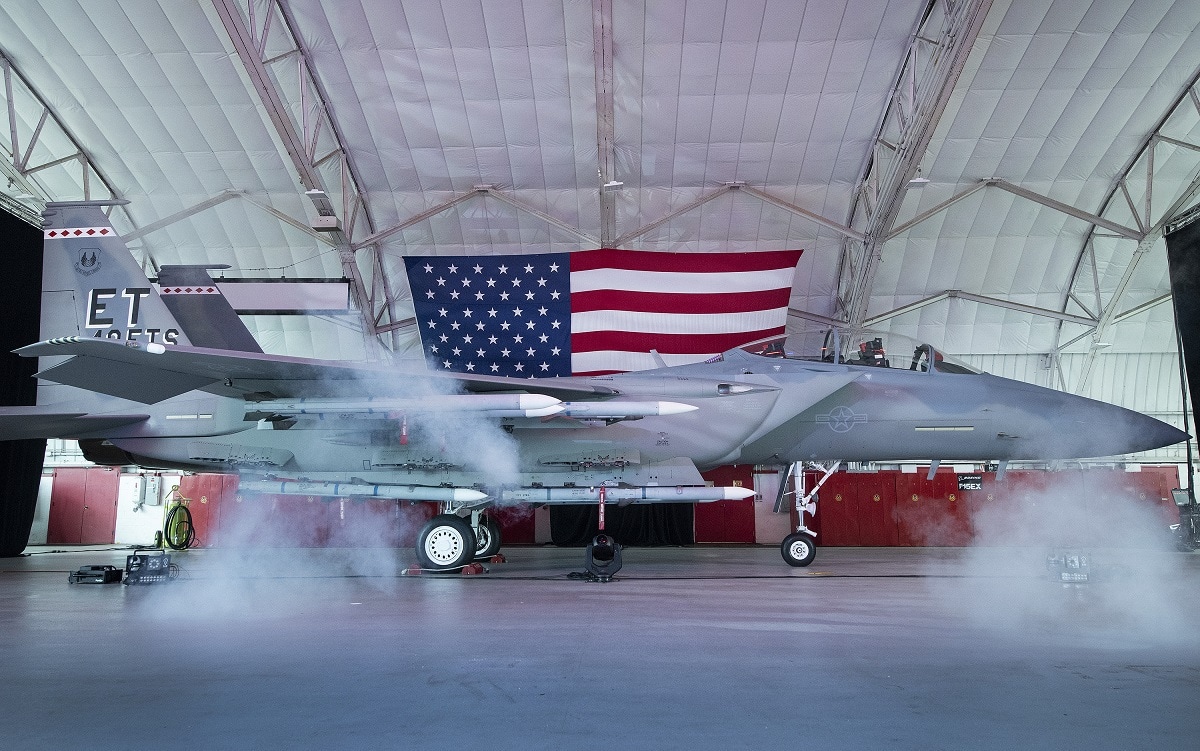
The Air Force’s newest fighter, the F-15EX Eagle II, was revealed and named during a ceremony, April 7, 2021, at Eglin Air Force Base, Fla. The aircraft will be the first Air Force aircraft to be tested and fielded from beginning to end, through combined developmental and operational tests. (U.S. Air Force photo by Samuel King Jr.)
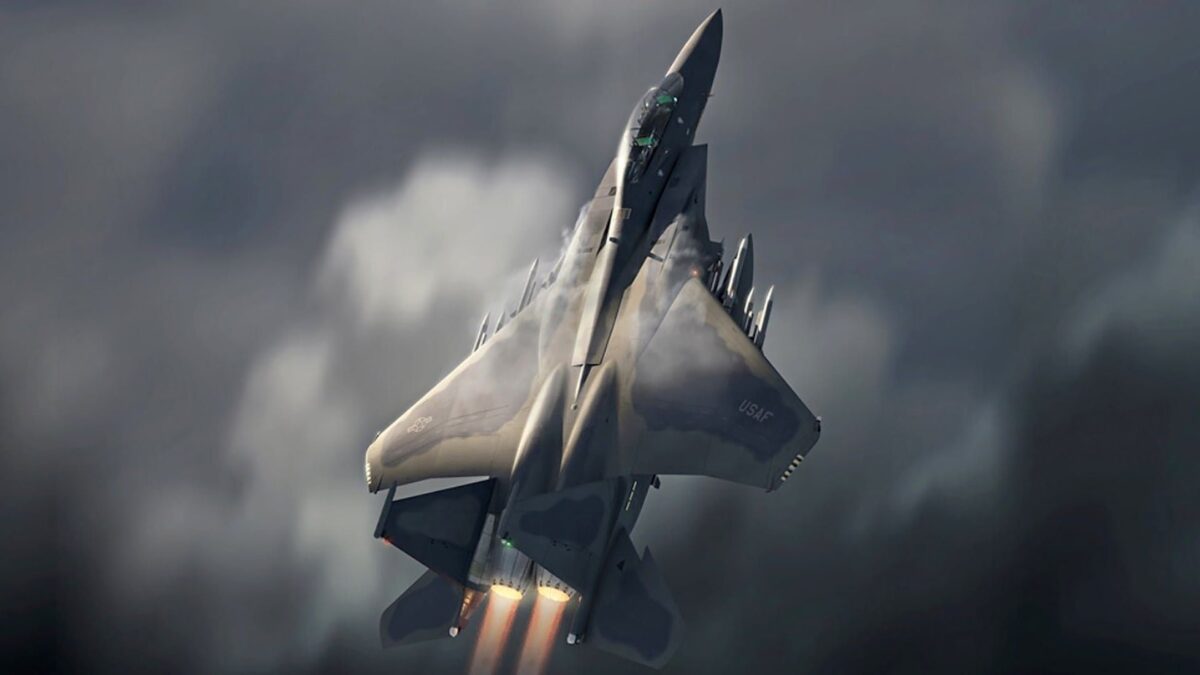
Boeing F-15EX. Image: Boeing artist rendition.
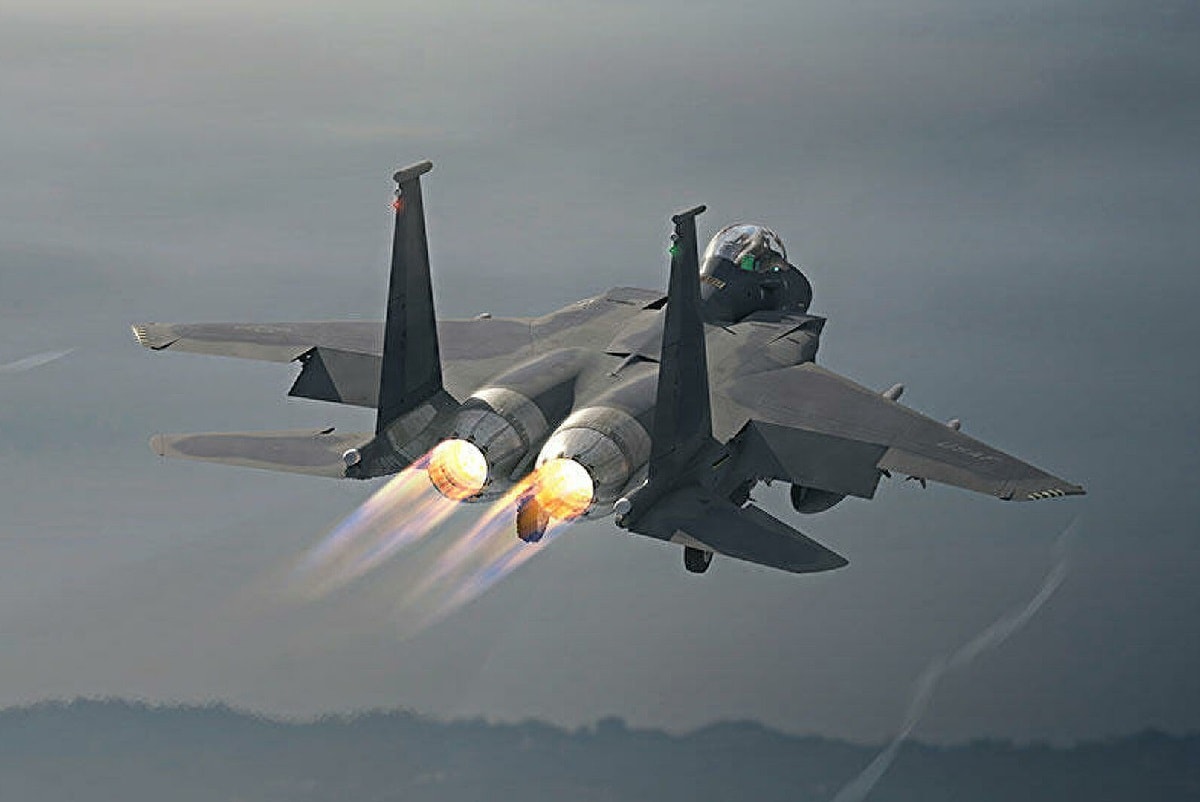
Boeing F-15EX Eagle II. Artist Image from Boeing.
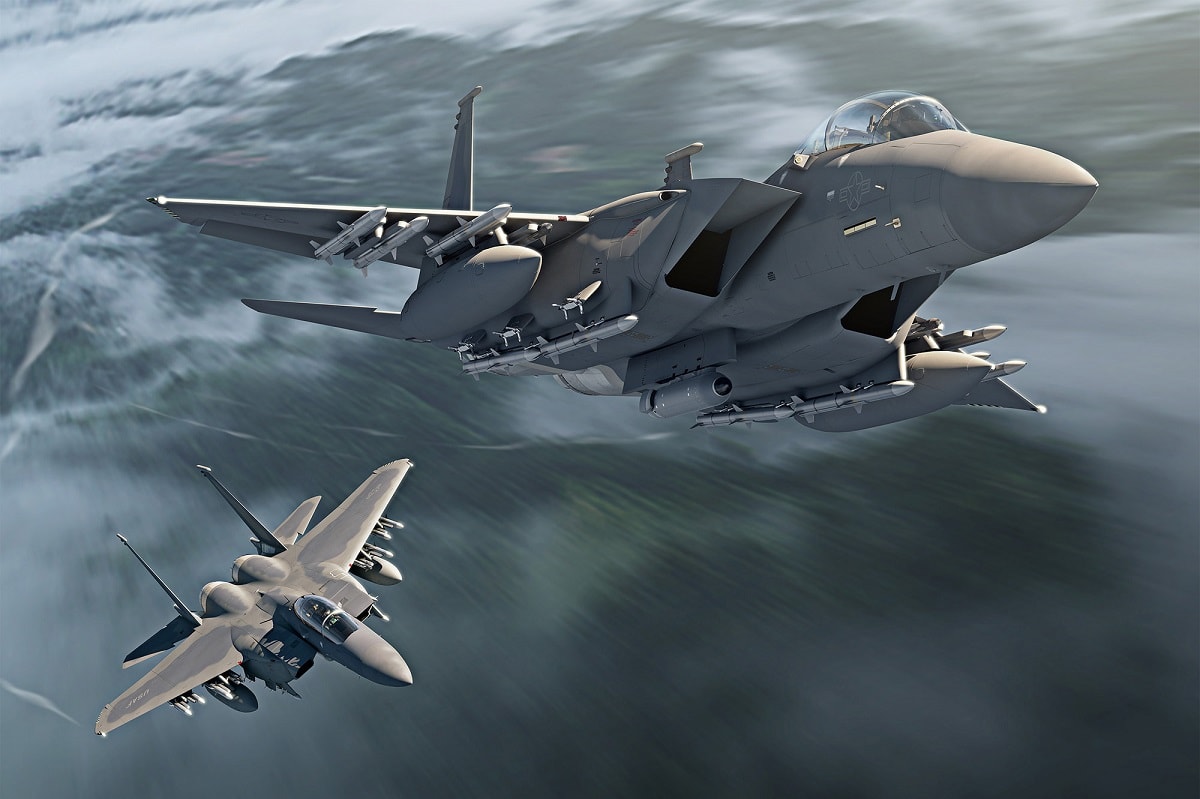
Two Boeing F-15EX fighters armed with air-to-air missiles. Image Credit: Boeing.

F-15EX Screenshot from Boeing Video

F-15EX Eagle II (Image: Boeing)
About the Author: Dr. Andrew Latham
Andrew Latham is a non-resident fellow at Defense Priorities and a professor of international relations and political theory at Macalester College in Saint Paul, MN. Andrew is now a Contributing Editor to 19FortyFive. You can follow him on X: @aakatham. Latham now writes a daily column for 19FortyFive.

